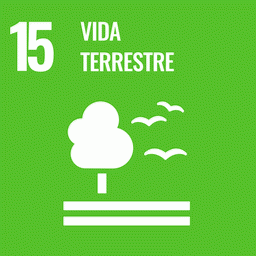In South America, the largest area of tropical savanna is the Brazilian Cerrado biome, which encompasses a considerable range of environmental variation, with different types of soil, geology, geomorphology and climate, as well as distinct types of vegetation. These savannas include two types of vegetation: one on hilly slopes, with relatively shallow interspersed with rocky soils (RS), known as Rocky Cerrado, and the other located on flat terrain with deep soils (DS), known as Typical Cerrado. Our objective was to evaluate the effects of the heterogeneity of the chemical and granulometric properties of the soils on the composition and diversity of the shrubby–arboreal strata of the RS and DS. We found that, despite the reduced abundance of woody plants in the RS, and the physical limitations on plant development imposed by the rocky outcrops found in this environment, the RS is characterized by similar species diversity to that found in the DS. We present evidence of greater heterogeneity in the species composition and edaphic proprieties of the RS in comparison with the DS. We conclude that the greater variation and heterogeneity in the substrates of the RS accounts for the similarity in the species diversity between the RS and DS, although we suspect that other drivers, not investigated here, may also be involved. The intense conversion of native vegetation within the study region interferes with the establishment of exclusive species in RS (e.g., Norantea guianensis Aubl.) and DS (e.g., Couepia grandiflora (Mart. & Zucc.) Benth.) and consequently threatens the community structure of both environments with fundamental implications for the conservation.
Ana Clara Abadia, Eddie Lenza, Henrique A. Mews, Leonardo Maracahipes-Santos, Nadjarriny Winck, Marcos José Gomes Pessoa
Baixar (sujeito à disponibilidade)
Download (subject to availability)

Este projeto está alinhado aos Objetivos de Desenvolvimento Sustentável (ODS).
Saiba mais em brasil.un.org/pt-br/sdgs.
Veja também
See also
Indigenous Lands, Protected Areas, and Slowing Climate Change
Indigenous Lands, Protected Areas, and Slowing Climate Change
Forest clearing and degradation account for roughly 15% of global greenhouse gas emissions, more than all the cars, trains, planes, ships, and trucks on earth. This is simply too big a piece of the problem to ignore; fail to reduce it and we will fail to stabilize...
Floresta em pé compensa
Floresta em pé compensa
Artigo, produzido por Paulo Moutinho e Márcio Santilli, publicado na revista "Adiante".